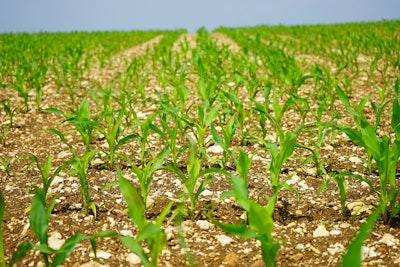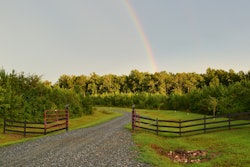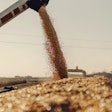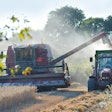
No, I’m not talking about a coiled piece of metal. I’m talking about the potential energy the season of spring brings us. In layman terms, potential energy is the energy an object has related to the position, internal storage, charge, etc. Think about the potential energy in this season called spring.
Take a seed. At this time of year we’re hoping for a bountiful harvest. With the right amount of nutrients, water and sunlight the seeds’ energy is released, and we see the potential expressed kinetically in plant growth.
Let’s go a bit deeper. Not only does the seed contain potential, but the fear and or hope for production creates potential. Think of all the energy spent on observing this potential. Planting reports, crop condition reports, stocks to use projections, weather observations and on and on it goes. For years now, I’ve been working with farmers and elevators to release another form of potential energy in agriculture. Let’s call it the potential energy of a plan.
Potential energy plan
During the winter season, I encourage elevator managers, merchandisers and their farmers to work on their plans. For the farmer, we make a simple plan.
- Look at expected production.
- Get a clear picture of your cost of production.
- Set a goal for your farm.
- Calculate a target price to achieve this goal.
- There is a fifth step, but I’ll get back to it in a bit.
Likewise, I have similar conversations with elevator managers and merchandisers.
Look at the amount of space you have available for each crop you store. You should think about if you are going to carry some 2019 grain into 2020, and then what is your expected handle for this fall season. This calculation will let you know how much grain you’ll need to move at harvest and help determine what you need to carry and sell throughout the year.
Knowing this number will not only help you see your logistical needs — but also your merchandising opportunities. You can see what your spread needs are and have a clearer picture of your selling needs, which in turn help you set goals for both.
The final step for both the farmer and the merchandiser is the same. Take action.
Planning opportunities
During the spring and early summer months, the market usually gives pricing opportunity for farmers to lock in good prices and the elevator to buy favorable basis. Do you have an origination strategy to take advantage of this? In the past several years, farmers’ best chance for locking in profit connects intimately with making a high percentage of their sales at the summer highs. Do you have their targets and best interest in mind? Probably some of the most time consuming yet rewarding work is helping your growers. Work hard on buying grain at a good price for them and a good basis for you.
Typically, you have a couple of opportunities before harvest to lock in your carry needs. One in early spring if the planting season looks promising. The second one comes if there is a good start to a crop as we move into the summer months. Considering local production and expected use, when do you expect to move grain? What is the spread structure telling you? What spread structure would you like to lock in? What percent of carry is your goal to lock in spreads? Take action by setting spreads or putting targets in place to create or capture potential.
The plans for the farmer and the elevator create a lot of potential energy. But like most potential energy sources, they need a little shove to get the ball rolling. Proactively working with your producers to use targets and forward contracts can create a lot of power.
Likewise, analyzing your spread needs and putting in targets for spreads that will help you carry your crop can add some needed fuel for your merchandising year. Taking action can transform a business from “keeping the lights” on to one experiencing sustainable growth, or even better, one that thrives!
One other important thing you’ll want to consider in your plan is cash flow. Do you have the financing to cover your position and cover a potential rally? Obtaining proper financing is much easier when you don’t need the cash, and you and your banker will sleep easier knowing you have a plan in place.
Finally, success rarely happens without effort. Repeated success is a sign of hard work usually founded on a solid plan. Do yourself and your business a favor and take time to plan this spring. Once you have it, work it, review it, but ultimately take action. Turn that potential energy into momentum for your business. ■
Dwayne Wilson is a grain merchandising specialist with White Commercial Corporation. He works with both WCC’s sales and merchandising support teams to help grain elevators across North America grow. Dwayne resides in Covington, OH, with his wife and three children. He can be reached at[email protected].



















